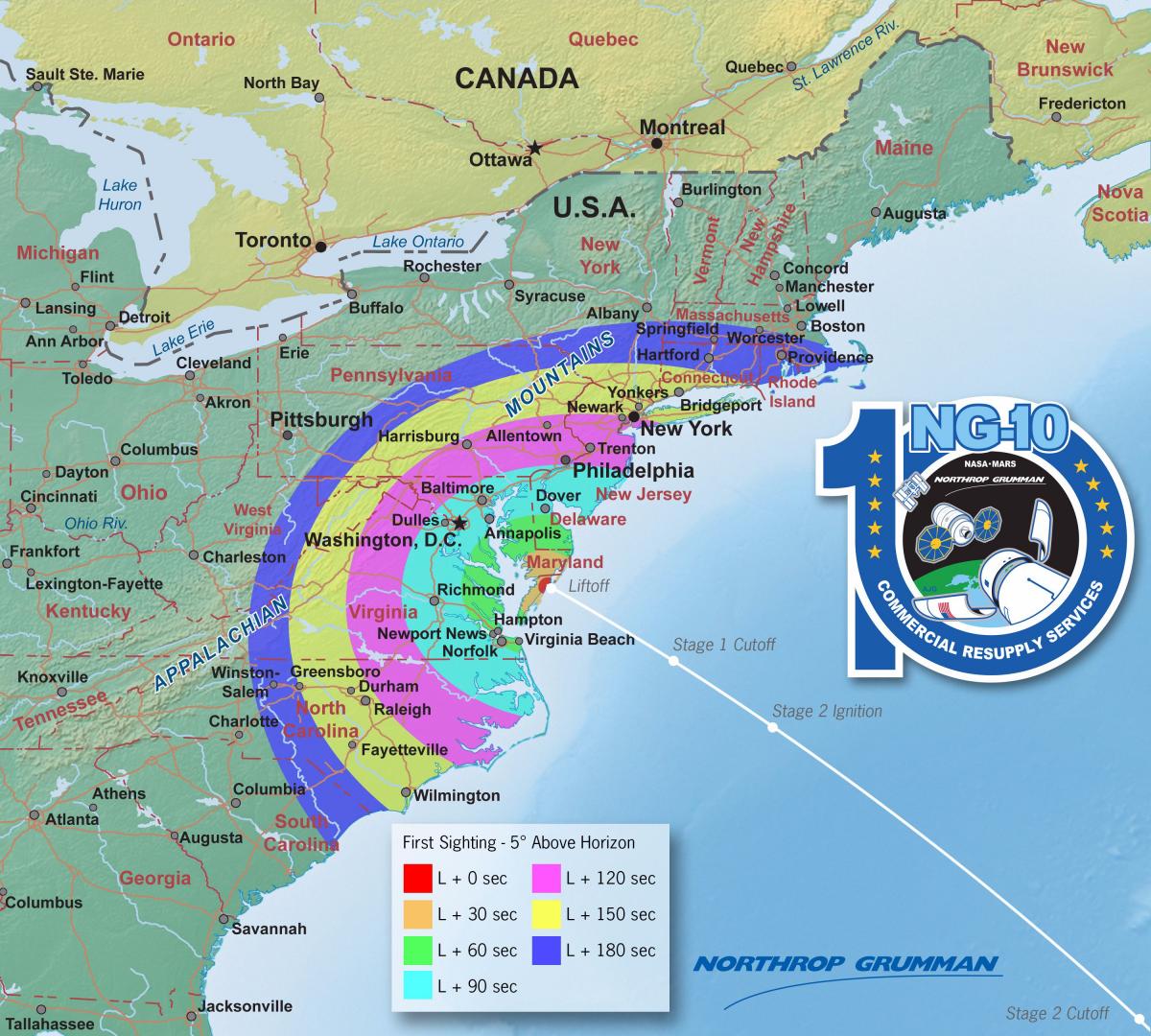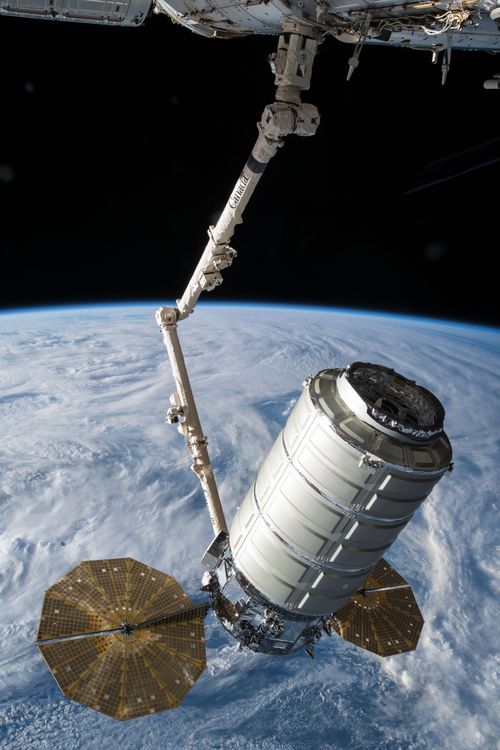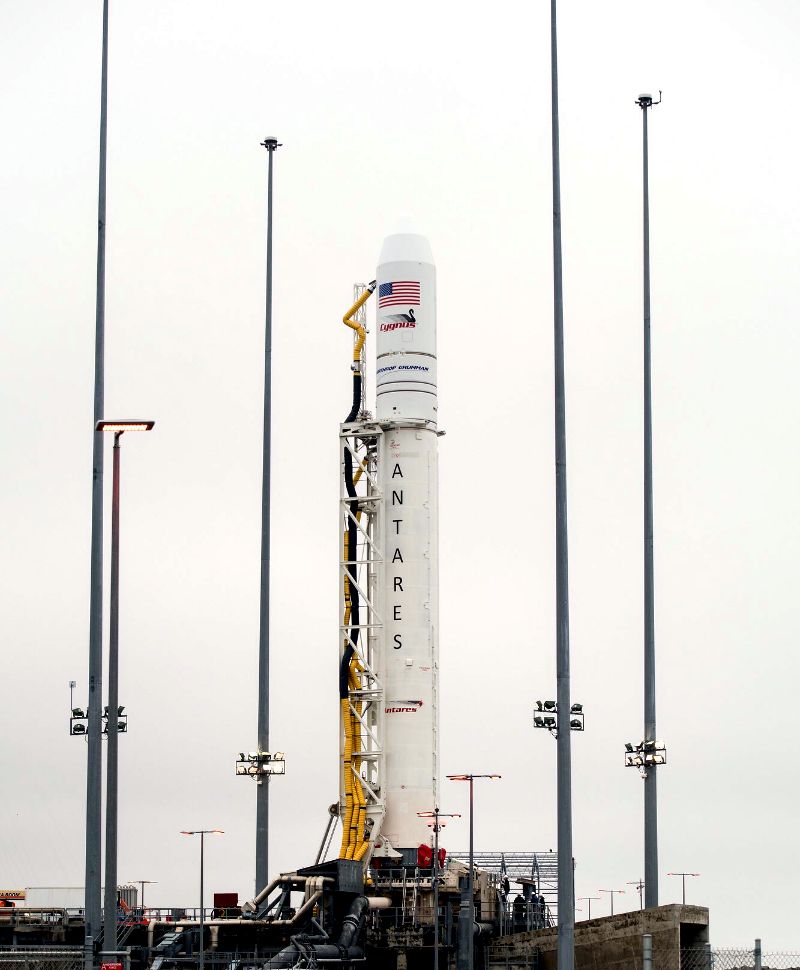By the early 2020's the US will have 4 crew and 4+ cargo orbital-class spacecraft - and one of those cargo vehicles will be upgraded to crew (Sierra Nevada Dream Chaser.) The largest, BFS, will do both.
Wild cards: the StratoLaunch Black Ice and Boeing Phantom Express spaceplanes.
Then there are the sub-orbital vehicles and point-to-point sub-orbital transports.
Northrop Grumman ✔ @northropgrumman
Heads up East Coast! We are scheduled to launch our NG-10 #Cygnus aboard #Antares from @NASA_Wallops this Thursday, November 15! Take a look to find out when you'll be able to see the launch from your town. The five-minute launch window opens at 4:49 am EST. #NorthropGrumman
ISS National Lab
✔
@ISS_CASIS
Its launch week! ������
Get ready for @northropgrummans upcoming resupply mission to the @Space_Station. Today, tune into NASA TV at 2:00pm ET to learn more about the science that will be launching to our orbital laboratory. https://www.nasa.gov...l-space-station
Jeff Foust @jeff_foust
One key takeaway from the #NG10 ISS science briefing this afternoon(beyond the experiments themselves): ISS utilization hasnt been adversely affected by the reduced ISS crew size. No changes to the investigations flying on this Cygnus or next months Dragon.
|
That Cygnus launch is scheduled for Thursday morning at 4:49 am EST, but the forecast out at Wallops doesnt look promising. (At least its not the wintry mix forecast for DC). pic.twitter.com/tHCIn07pDP
2:49 PM - Nov 13, 2018



Wild cards: the StratoLaunch Black Ice and Boeing Phantom Express spaceplanes.
Then there are the sub-orbital vehicles and point-to-point sub-orbital transports.
Northrop Grumman ✔ @northropgrumman
Heads up East Coast! We are scheduled to launch our NG-10 #Cygnus aboard #Antares from @NASA_Wallops this Thursday, November 15! Take a look to find out when you'll be able to see the launch from your town. The five-minute launch window opens at 4:49 am EST. #NorthropGrumman
ISS National Lab
✔
@ISS_CASIS
Its launch week! ������
Get ready for @northropgrummans upcoming resupply mission to the @Space_Station. Today, tune into NASA TV at 2:00pm ET to learn more about the science that will be launching to our orbital laboratory. https://www.nasa.gov...l-space-station
Jeff Foust @jeff_foust
One key takeaway from the #NG10 ISS science briefing this afternoon(beyond the experiments themselves): ISS utilization hasnt been adversely affected by the reduced ISS crew size. No changes to the investigations flying on this Cygnus or next months Dragon.
|
That Cygnus launch is scheduled for Thursday morning at 4:49 am EST, but the forecast out at Wallops doesnt look promising. (At least its not the wintry mix forecast for DC). pic.twitter.com/tHCIn07pDP
2:49 PM - Nov 13, 2018
Antares NG-10: What’s On Board?
Northrop Grumman's Cygnus cargo spacecraft is set to lift off aboard the company’s Antares rocket on Thursday, Nov. 15 at 4:49 a.m. EST (9:49 a.m. UTC) from NASA’s Wallops Flight Facility on Virginia’s Eastern Shore.
Under NASA’s Commercial Resupply Services contract, Cygnus will carry about 7,500 pounds of crew supplies and hardware to the International Space Station, including science and research in support of dozens of research investigations.
Highlights of space station research that will be facilitated by investigations aboard this Cygnus include:
A test of the first integrated 3D printer and recycler to turn waste plastic materials into high-quality 3D-printer filament to create tools and materials, a key capability for future long-duration space missions beyond low-Earth orbit.
A small device that contains human cells in a 3D matrix represents a giant leap in the ability of scientists to test how those cells respond to stresses, drugs and genetic changes. About the size of a thumb drive, the devices are known as tissue chips or organs on chips.
The Tissue Chips in Space initiative seeks to better understand the role of microgravity on human health and disease and to translate that understanding to improved human health on Earth.
Many of the changes in the human body caused by microgravity resemble the onset and progression of diseases associated with aging on Earth, such as bone and muscle loss. But the space-related changes occur much faster. That means scientists may be able to use tissue chips in space to model changes that might take months or years to happen on Earth.
Higher Orbits’ “Go For Launch†student program is supplying an experiment that focuses on the evaluation of self-healing materials in microgravity, the work of students Spencer Harris, George Tang, Ryan Ferzoco, Tarun Golla and Abby Maltese.
An investigation into the complex process of cement solidification to explore how gravity levels like those on the Moon and Mars may potentially affect concrete hardening.
Research to develop a mathematical model for how an astronaut’s perception of motion, body position and distance to objects changes in space.
Included in the cargo are investigations that will enable U.S. National Laboratory research, which is managed by the Center for the Advancement of Science in Space. They include an investigation to evaluate growth of protein crystals implicated in Parkinson’s disease and astrophysics research to examine the formation of chondrules, some of the oldest material in the solar system.
Northrop Grumman's Cygnus cargo spacecraft is set to lift off aboard the company’s Antares rocket on Thursday, Nov. 15 at 4:49 a.m. EST (9:49 a.m. UTC) from NASA’s Wallops Flight Facility on Virginia’s Eastern Shore.
Under NASA’s Commercial Resupply Services contract, Cygnus will carry about 7,500 pounds of crew supplies and hardware to the International Space Station, including science and research in support of dozens of research investigations.
Highlights of space station research that will be facilitated by investigations aboard this Cygnus include:
A test of the first integrated 3D printer and recycler to turn waste plastic materials into high-quality 3D-printer filament to create tools and materials, a key capability for future long-duration space missions beyond low-Earth orbit.
A small device that contains human cells in a 3D matrix represents a giant leap in the ability of scientists to test how those cells respond to stresses, drugs and genetic changes. About the size of a thumb drive, the devices are known as tissue chips or organs on chips.
The Tissue Chips in Space initiative seeks to better understand the role of microgravity on human health and disease and to translate that understanding to improved human health on Earth.
Many of the changes in the human body caused by microgravity resemble the onset and progression of diseases associated with aging on Earth, such as bone and muscle loss. But the space-related changes occur much faster. That means scientists may be able to use tissue chips in space to model changes that might take months or years to happen on Earth.
Higher Orbits’ “Go For Launch†student program is supplying an experiment that focuses on the evaluation of self-healing materials in microgravity, the work of students Spencer Harris, George Tang, Ryan Ferzoco, Tarun Golla and Abby Maltese.
An investigation into the complex process of cement solidification to explore how gravity levels like those on the Moon and Mars may potentially affect concrete hardening.
Research to develop a mathematical model for how an astronaut’s perception of motion, body position and distance to objects changes in space.
Included in the cargo are investigations that will enable U.S. National Laboratory research, which is managed by the Center for the Advancement of Science in Space. They include an investigation to evaluate growth of protein crystals implicated in Parkinson’s disease and astrophysics research to examine the formation of chondrules, some of the oldest material in the solar system.




